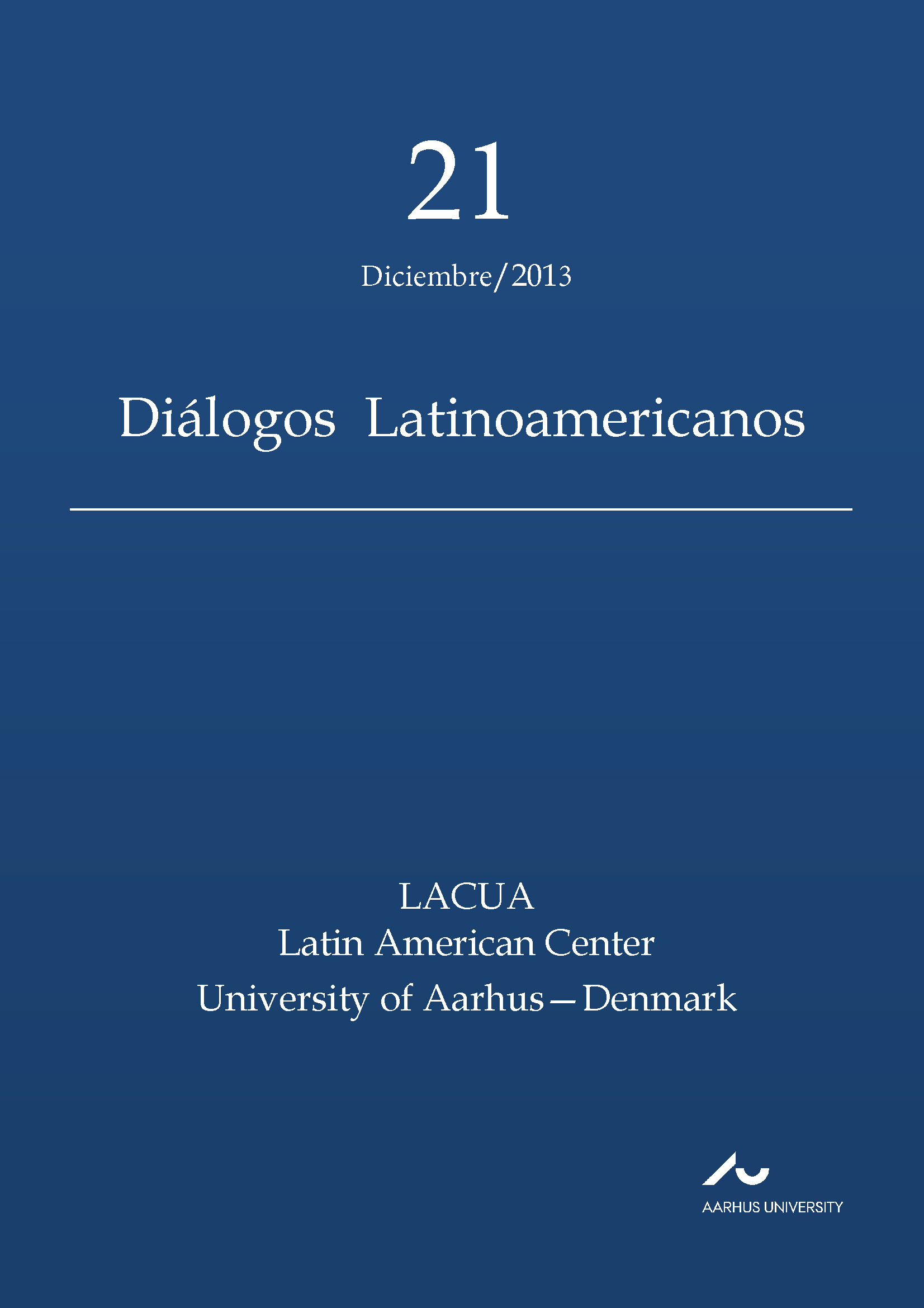La formulación de las políticas públicas de turismo en México. El caso del programa federal “Pueblos Mágicos” 2001-2012
DOI:
https://doi.org/10.7146/dl.v14i21.113255Keywords:
tourism, public policy, Mexico, social constructed realityAbstract
This article analyzes the consequences of public policies that are developed based on
socially constructed definitions of the different actors. I will focus on the national
Mexican Tourism program “Magic Villages” to explore the role and impact that public
policy might have on shaping the national Mexican identity. I argue that tourism is not
only to be understood as an economic factor, but also as significant symbolic space of
interactions in the contemporary societies.
References
Peter Aucoin, The Structure of Policy Making in Canada. Macmillan:
Toronto, Canada.
Berger, P.; Luckmann T. (1967) The Social Construction of Reality: A treatise
in the Sociology of Knowledge Anchor Books: USA.
Birkland, T. (2007) “Agenda Setting in Public Policy”. Frank Fischer, Gerald j.
Miller y Mara S. Sidney. Handbook of Public Policy Analysis. Taylor &
Francis Group: USA, 63-78.
Clancy, M. (2001), “Mexican Tourism: Export Growth and Structural Change
since 1970”. Latin American Research Review, 36(1): 128-150.
Clausen Baslev, H. (2007), “Juntos pero no revueltos”. Copenhagen Business
School Press: Copenhagen.
Clausen Baslev, H.; Velázquez García, M. A. (2011) “En búsqueda del México
auténtico. Las comunidades norteamericanas en ciudades turísticas de
México”. En Tomás Mazón, Raquel Huete y Alejandro Mantecón (eds.)
Construir una nueva vida. Los espacios del turismo y la migración
residencial. Mil razones: Santander, 61-80.
Craik, J. (1997) “The Culture of Tourism”, C. Rojek and J. Urry (eds), Touring
Cultures: Transformation of Travel and Theory. Routlegade: London.
Fox, R. (2001), “Constructivism Examined”, Oxford Review of Education,
27(1): 23-35.
Hieranaux, D. (1989) Teoría y praxis del espacio turístico. UAM-Xocimilco:
México.
―. (2005) “Imaginarios y lugares en la reconquista de los centros históricos”.
Ciudades, RNIU, 65: 15-21.
Ingram, H.; Schneider, A.L.; Deleon, P. (2007) Social construction and policy
design. En Sabatier, P.A. (ed.) Theories of the Policy Process. Westview.
University of California: Davis, 93-128.
Jacobs, C. (2001) “Folk for Whom? Tourist Guidebooks, Local Color, and the
Spiritual Churches of New Orleans”, The Journal of American Folklore,
114(453), 309-330.
López, J.; González C. (2012) Diagnóstico del sector turismo en México.
Fundación Preciado. [Documento WWW]. URL
http://www.fundacionpreciado.org.mx/biencomun/bc204-205/Numeralia.pdf
[fecha de consulta 12 de Marzo de 2013].
Mantecón, A. (2008) La experiencia del turismo. Icaria: España.
Miller, M.L & Auyong J. (1991) ”Coastal Zone Tourism: A potent Force
Affecting Environment and Society”. Marine Policy 15(2), 75-99.
MacCannell, D. (1973), “Staged Authenticity: Arrangements of Social Space in
Tourist Setting”, The American Journal of Sociology, 79(3): 589-603.
Mettler, S.; Welch, E. (2004) “Civic Generation: Policy Feedback Effects of the
GI Bill on Political Involvement over the Life Course”, British Journal of
Political Science, 34(3): 497-518.
OECD (2012) Tourism Trends and Policies 2012. OECD. European Union.
Pine, J.; Gilmore, J. (1999) The Experience Economy. Harvard Business School
Press: Boston.
Sánchez Serrano, R., (2005) La construcción social del poder local. El Colegio
de México: México.
Secretaría de turismo (2012a) Hoteles certificados con Calidad Ambiental.
[Documento WWW]. URL
http://www.sectur.gob.mx/es/sectur/Calidad_Ambiental_Turistica_ [fecha
de consulta 4 de Febrero de 2013].
Secretaría de turismo (2012b) Programa de Turismo Sustentable en México.
[Documento WWW]. URL
http://www.sectur.gob.mx/PDF/planeacion_estrategica/PTSM.pdf [fecha de
consulta 4 de Febrero de 2013].
Secretaría de turismo (2012c) Inversión Federal en el Programa Pueblos
Mágicos 2001- 2012. Gobierno Federal.
Schneider, A.; Ingram, H. (1993) ”Social Construction of Target Population:
Implications for Politics and Policy” The American Political Review, 8(2):
334-347.
Schwandt, T. (1994), “Constructivist, Interpretativist Approaches to Human
Inquiry”. En Norman K. Densin, Yvonna S. Lincoln (eds.), Handbook of
Qualitative Research, Sage Publication: USA, 118-137.
Shaw, G. (2004) “Living, Learning, and Teaching Anti-Poverty Polices:
Reflections on an Undergraduate Travel Course”, Political Science and
Politics, 37(4): 855-858.
Torres, R. M.; Momsen, J. (2005) “Gringolandia: The Construction of a New
Tourist Space in Mexico”. Annals of the Association of American
Geographers, 95(2): 314-335.
Turner, L.; Ash, J. (1991) La horda dorada. El turismo internacional y la
periferia del placer. Endymion: Madrid.
Wood, R. (1980) “Tourism and Cultural Change in Southeast Asia”. Economy
Development And Cultural Change, 28(3): 561-581.
Velázquez García, M.A. (2008) “La construcción de la imagen de México en
Estados Unidos desde una perspectiva de riesgo”. Frontera Norte, El
Colegio de la Frontera Norte, 20(39): 37-67.
Villalobos Acosta, C. (2011) Archeology in Circulation: Nationalism and
Tourism in Post-Revolutionary Mexican Coins, Notes, Stamps and
Guidebooks. Doctoral Thesis. Durham University. United Kingdom.
[Documento WWW]. URL http://etheses.dur.ac.uk/3211/
Downloads
Published
How to Cite
Issue
Section
License
Counting from volume 31 (2022), articles published in Diálogos Latinoamericanos are licensed under CC-BY 4.0. Read more about the license terms here https://creativecommons.org/licenses/by/4.0/.
No Creative Commons license applied on volumes 1-30. All rights reserved by the authors. Readers may download, read, and link to the articles, but they cannot republish the articles.
With the publication of volume 31 (2022), authors retain the full copyright to their articles and give Diálogos Latinoamericanos the right to the first publication. Authors also retain copyright to earlier versions of manuscripts, such as the submitted (pre-print) and the accepted manuscript (post-print).
Copyright to articles published in volumes 1-30 is held by the authors.





